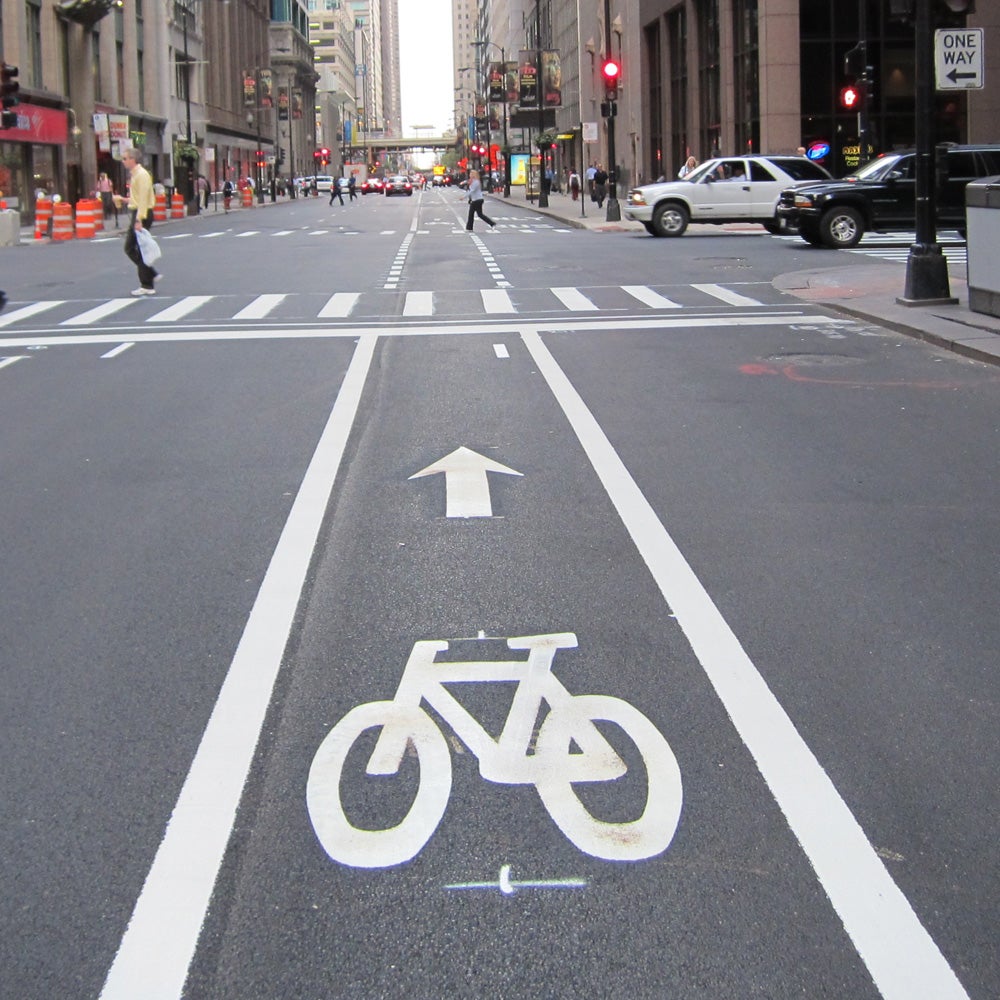It was about 11:20 a.m. on a cold day last November, and Jonathan Chase Adams was on his bicycle, riding from downtown Bend, Oregon, toward his office. He was in the spacious bike lane that runs along the northbound side of Wall Street, cruising down a moderate downhill stretch fast enough to be passing cars backed up at a traffic light up the road. As he approached the corner of Olney Avenue, the signal turned green, so Adams kept pedaling; he was on his way to work and planned to ride straight through the intersection.
He never made it. When the light turned green, the driver of a FedEx semi-truck who had been cued up at the signal initiated a right turn. Witnesses would later testify in court that Adams bounced off the side of the truck several times before falling to the ground. Moments later, the rear wheels of the tractor trailer ran over his body. Adams was pronounced dead at the scene.
Sadly, this kind of crashŌĆöwhat traffic experts would call a right hookŌĆöis hardly uncommon, and when it involves a large truck and a cyclist, the end result is often horrific. But while most cyclists would not be surprised by the grim details of this fatal 2017 crash, many surely would be shocked by the legal proceedings around it.
In a decision announced October 17 by Deschutes County Circuit Court Judge A. Michael Adler, the driver of the FedEx truck, who had never┬Ābeen charged with a crime, was found not guilty of a traffic citation. In May, the district attorney had . Adler ruled that he had . He also told the court that, since Adams had been ŌĆ£speedingŌĆØ through an intersection, the cyclist was not exercising due careŌĆöa term intimating that Adams hadnŌĆÖt the necessary steps to avoid harm. In a nutshell, the judge ruled that Adams did not have the right of way and that the bike lane effectively ended at the intersection.
Experienced cyclists already know that a conventional bike laneŌĆöwhere government officials paint stripes on the road to demarcate a dedicated space for ridersŌĆöoffers few real physical protections from motor vehicles. But the case in Bend offers a window into how the legal protections they offer are extremely limited, too.
The problem extends outside of Oregon. After the October ruling, I spoke with two attorneys who specialize in cycling-related lawŌĆöone based in Colorado and the other in OhioŌĆöand both said that existing laws in their states do almost nothing to define cyclistsŌĆÖ right of way in bike lanes or protect them in a crash.
ŌĆ£When thereŌĆÖs a collision, drivers, cyclists, and law enforcement don't have clear legal guidance to figure out who was at fault,ŌĆØ says Megan Hottman, a cycling attorney who practices in Golden, Colorado. ŌĆ£It's amazing to me that a cyclist can be going straightŌĆöoften on a green light or through an intersectionŌĆöat or below the posted speed limit, and a car can come up from behind, attempt to pass but then whip a right turn into the cyclist, and then somehow the cyclist is deemed at fault.┬ĀItŌĆÖs baffling to me.ŌĆØ
“What the hell is a cyclist supposed to do when a car approaches from behind? Does the legal system expect us to have eyes on the back of our heads?ŌĆØ
Steve Magas, a cycling attorney who practices in Cincinnati, agrees. ŌĆ£I keep telling folks that unless the bike lane rules are written into local ordinances, cyclists can be at risk of having no rights,ŌĆØ he says. ŌĆ£In Ohio, thereŌĆÖs no provision in state law that defines ŌĆśbike lanesŌĆÖ or the rights of those in bike lanes compared to other lanes.ŌĆØ
Cyclists have good reason to think that they have the legal right of way when theyŌĆÖre pedaling in a bike lane. ŌĆ£The entire point of the traffic algorithm is to develop a system of rules that prevents folks from crashing into each other,ŌĆØ Magas says. ŌĆ£And the main rule is the right of way. If you have the right of way, you have the right to go straight without interruption.ŌĆØ
This right is typically codified for pedestrians crossing a busy street in a crosswalk. But thatŌĆÖs not the case for cyclists.
Both attorneys expressed considerable frustration that cyclists donŌĆÖt yet have more rational, legal protections. ŌĆ£If we are going to spend the time and money building bike lanes for cyclists, they must come with some level of protection,ŌĆØ says Hottman. ŌĆ£If bike lanes are where city planners want us riding, and if we agree that collisions and tensions tend to decrease when cyclists get dedicated places to ride, then we have to be granted some level of protection when we ride in them. My perfect world would be a state statute that says motorists turning across a bike lane must yield to bikes in bike lane.ŌĆØ
If such a statute existed in Oregon, the FedEx driver who hit and killed Adams likely would have faced criminal charges more serious than a traffic citationŌĆöespecially one that didnŌĆÖt even survive a legal challenge.
Instead, the cycling attorneys I interviewed say that their clients are often blamed in similar circumstances. Hottman describes an ongoing case in which her client was riding straight through an intersection in a bike lane and was hit by a car that approached from behind and turned directly into the rider. ŌĆ£I just got a call today from an insurance adjuster and the insurance company is blaming the rider for the collision,ŌĆØ she says, getting heated. ŌĆ£This sort of thing seems to happen every damn day. I mean, what the hell else is a cyclist supposed to do when a car approaches from behind?┬ĀIf weŌĆÖre going straightŌĆöin a bike lane, with a green light, while going below the posted speed limitŌĆödoes the legal system expect us to have eyes on the back of our heads at all times?ŌĆØ
To add insult to injury, the judge in Oregon cited witness accounts about the cyclistŌĆÖs speed as evidence of ┬Āan act of negligence. I studied the Google streetview of Wall Street in Bend and, given the moderate grade, it seems unlikely that a cyclist could have easily exceeded the posted speed limit. ŌĆ£In this case, the cyclist was seen as ŌĆśracingŌĆÖ down the hill past a bunch of other traffic and the judge viewed him as negligent for not noting the big truck had its signal on,ŌĆØ says Magas. ŌĆ£But thatŌĆÖs the thing with the true right of way: you donŌĆÖt have to worry about anyone else. You are legally entitled to presume that people are not going to interview with your right of way. ThatŌĆÖs the magic of having the right of way.ŌĆØ
As more cities paint more bike lanes and more cyclists use them, the urgency to address this legal grey area will grow. Obviously, protected bike lanesŌĆöwhere cyclists and motor vehicles are physically separatedŌĆögive riders more physical protection, but even then, the chaos of intersections needs to be fixed. For bike lanes to offer real protection, legislatures need to pass laws codifying ridersŌĆÖ right of way, then law enforcement and the judicial system needs to enforce those laws.
Until then, itŌĆÖs on cyclists to be vigilantŌĆöfor now, thereŌĆÖs no one else to protect us.


